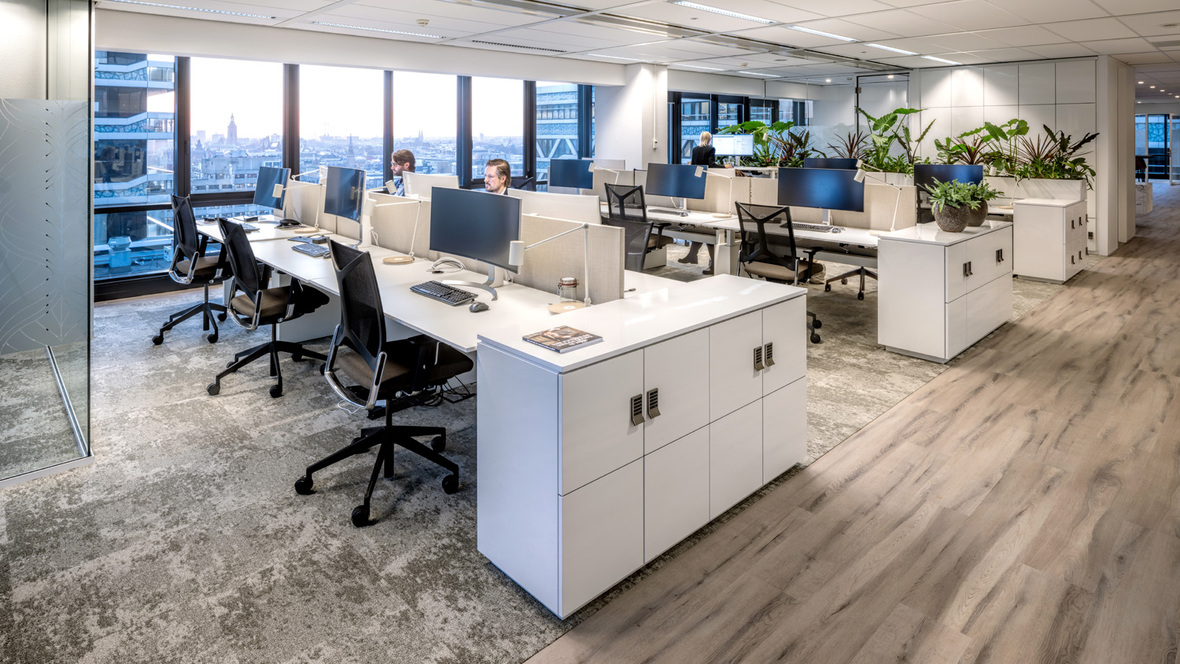Redesigning an old office space can reinvigorate your work environment, support efficiency, and establish a seriously welcoming climate for representatives and clients the same. However, without proper planning and execution, navigating the renovation process can be difficult. In this article, we will talk about ten fundamental tips to assist you with effectively revamping an old office space. From careful planning to incorporating modern design elements, these tips will guide you through the renovation journey and ensure a seamless transformation.
Choose Colors and Materials Wisely:
Tones and materials assume a critical part in the general vibe of an office space. Choose a variety plot that lines up with your image character while establishing an agreeable and outwardly engaging environment. Consider the psychological effects of colors on mood and productivity. Get rid of all low-quality materials such as old bulbs, cheap insulation rolls, etc. Additionally, select durable and low-maintenance materials for flooring, furniture, and surfaces to ensure longevity and easy upkeep.
Assess the Existing Space:
Before diving into the renovation process, start by assessing the current state of the office space. Identify any structural issues, outdated features, or areas that require special attention. Evaluate the layout and flow of the space, considering factors such as natural light, ventilation, and functionality. This thorough evaluation will help you prioritize renovation tasks and determine the scope of work needed for each area.
Set Clear Goals and Budget:
Establishing clear renovation goals is crucial for a successful project. Identify the specific objectives you want to achieve through the renovation, whether it’s creating a more collaborative workspace, improving energy efficiency, or updating the overall aesthetic. At the same time, decide sensible spending plan that envelops all redesign viewpoints, including materials, work, grants, and possibilities. Your decision-making process will be guided by a clearly defined budget, assisting you in avoiding overspending.
Prioritize Functionality and Ergonomics:
Efficient and ergonomic office design is vital for employee productivity and well-being. Consider the needs of your team when planning the layout, incorporating functional elements such as ergonomic furniture, adjustable workstations, and ample storage solutions. Streamline the progression of the space to limit interruptions and make assigned regions for coordinated effort, security, and unwinding. Productivity will rise, stress will go down, and a healthy work environment will come from a well-designed design.
Embrace Natural Light and Greenery:
Maximizing natural light in your office has numerous benefits, including improved mood, increased productivity, and reduced energy costs. Whenever possible, remove barriers that block natural light and consider adding windows or skylights. Additionally, integrating greenery through indoor plants can enhance the aesthetics and air quality within the office space. Plants not only add a touch of nature but also have a calming effect on employees, boosting their overall well-being.
Create a Flexible and Multi-Purpose Space:
Modern office environments thrive on flexibility and adaptability. Design your renovated office space with a flexible layout that can accommodate different work styles and future growth. Incorporate movable furniture, modular partitions, and versatile meeting spaces to encourage collaboration and teamwork. A multi-purpose space allows for easy reconfiguration and adaptation as the needs of your organization evolve.
Incorporate Breakout and Relaxation Areas:
Promoting employee well-being and work-life balance is crucial in a renovated office space. Designate breakout areas where employees can unwind, collaborate, or recharge. Include comfortable seating, recreational activities, and quiet spaces for focused work or relaxation. These areas foster creativity, encourage social interaction, and provide employees with a space to recharge, ultimately improving overall productivity and job satisfaction.
Communicate and Involve Employees:
Lastly, involving employees in the renovation process can lead to a sense of ownership and a smoother transition. Seek their input on design preferences, functionality requirements, and comfort considerations. Regularly communicate updates and timelines to keep everyone informed and engaged. Encourage feedback and address concerns promptly to create a collaborative atmosphere and ensure that the renovated office space meets the needs and expectations of your team.
Remodeling an old office space requires cautious preparation, meticulousness, and an emphasis on establishing a useful and moving climate. By following these ten fundamental tips, you can change your office into a space that upgrades efficiency, advances prosperity, and mirrors your association’s qualities. Make sure to adjust the tips to your particular requirements and look for proficient direction when fundamental. With proper planning and execution, your renovated office space will become a vibrant and thriving workplace.
